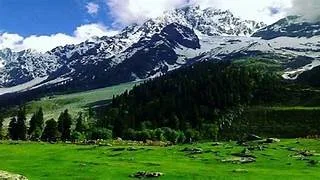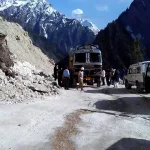SRINAGAR, SEPT 10: Jammu and Kashmir has been witnessing increasingly erratic weather patterns in recent years, ranging from snowless winters to flood-like situations, and from frequent cloudbursts to intense hailstorms and thunderstorms. These shifting climatic events signal significant environmental changes that could alter the region’s landscape and way of life permanently.
Over the past two months alone, the Union Territory has witnessed a series of cloudbursts triggering flash floods across both the Jammu and Kashmir divisions. The recent floods have not only revived haunting memories of the devastating 2014 deluge but have also caused immense destruction, leaving dozens homeless, and entire communities grappling with loss and uncertainty.
Even before large parts of the UT were inundated, multiple cloudbursts in areas such as Ramban, Kishtwar, Doda, and near the revered Mata Vaishno Devi shrine claimed lives and left behind widespread destruction. Flash floods resulting from these cloudbursts have led to several deaths and massive damage to infrastructure, roads, homes, and agricultural land.
Environmental experts attribute this increase in extreme weather events to climate change, accelerated by glacial retreat, deforestation, and the degradation of water bodies. According to the Meteorological Department, Jammu and Kashmir recorded 168 extreme weather events, including cloudbursts and flash floods, between 2010 and 2022.
Renowned environmentalist and Vice-Chancellor of the Islamic University of Science and Technology, Dr. Shakeel Romshoo, explains that cloudbursts occur when warm, moisture-laden clouds rapidly collide with cold air masses, resulting in the sudden and intense release of rain, often equivalent to months’ worth of precipitation in just minutes.
“Jammu and Kashmir is more prone to such extreme weather events due to its complex mountainous topography,” Dr. Romshoo said. “The Valley has not remained unaffected by global warming. We are now seeing either massive precipitation, frequent cloudbursts, rising temperatures, or prolonged dry spells, each a symptom of broader climate change.”
In May this year, the region recorded an unusual heatwave, with mercury levels soaring to record highs, yet another indicator of the changing climate in the Himalayan belt. Experts point out that temperatures in the Himalayas are rising faster than the global average, leading to increased instability in weather systems.
“Climate change is having a stark impact across the globe, and Kashmir is no exception,” noted Dr. Avinash Kumar, environmentalist and professor at the University of Jammu. “We are already witnessing the adverse fallout of this shift, be it glacial melt, irregular rainfall, or violent weather episodes.”
Dr. Avinash emphasised that these climatic disruptions are not just environmental concerns but also pose significant threats to human life, livelihoods, and regional stability. “Sometimes we face prolonged dry spells, and other times, excessive rainfall. These extreme variations are direct consequences of global warming,” he said.
In recent months, Kashmir has seen frequent snow avalanches, landslides, and a rise in cloudburst events, all tied to the warming climate. The fluctuating day temperatures are further evidence of environmental instability.
“The weather pattern in Kashmir has become irregular and unpredictable,” said Prof. Romshoo. “We are living through the local consequences of a global crisis.”
As cloudbursts become more frequent and devastating, experts warn that without serious climate adaptation and mitigation efforts, the region could be staring at an escalating environmental emergency, one that threatens not just nature but the very way of life in the Valley.






